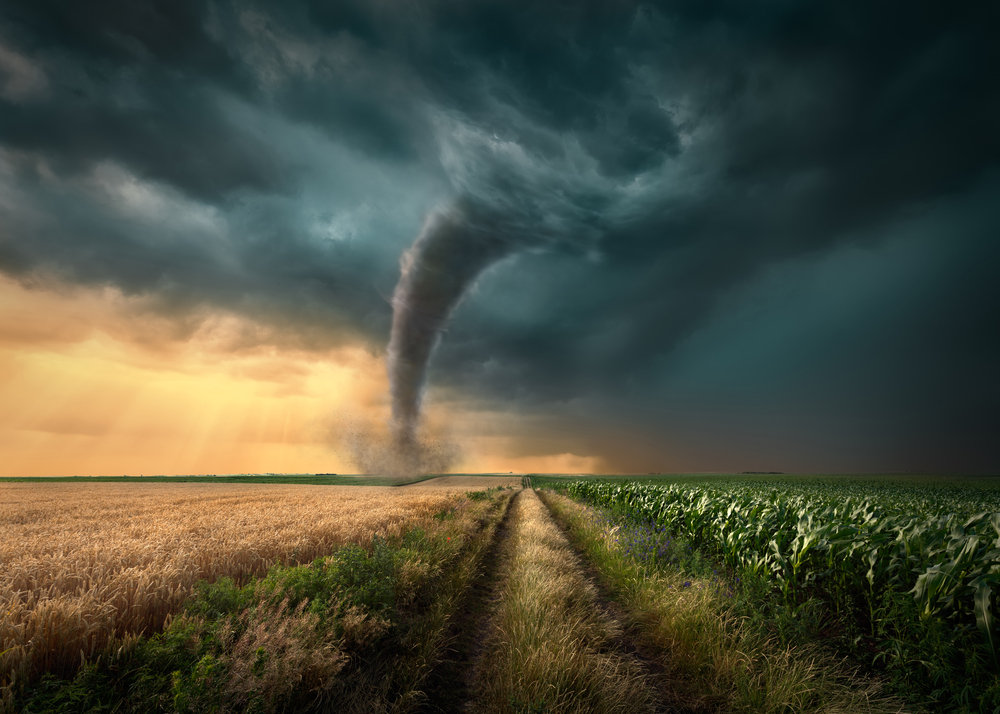Catastrophic weather events are unpredictable and can escalate quickly. Once they begin, there is usually little time to run for cover. Natural disasters don’t wait on humans to be ready to respond. That being stated, your investor clients must prepare their properties and tenants well in advance. There is no time like the present to get ready. Share the tips below from Ready.gov with your clients. It could save them thousands of dollars and may even save a life!
The stats
The NOAA reports that an average of 1,253 tornadoes hit the United States each year! These storms are not limited to any specific geographic location and have been documented in every state, and on every continent, except for Antarctica. AccuWeather meteorologists predict an increase in the number of tornadoes that will touch down in the U.S. in 2023. They specifically noted that major metro areas like Dallas, St. Louis, and Kansas City all face the threat of multiple severe weather events, including hail, high winds, and tornadoes. Following the same trend of 2022, the number of tornadoes in the states that make up Tornado Alley will decrease. Meteorologists predict that the worst severe weather will likely unfold over the eastern Plains into the Gulf Coast and Tennessee Valley.
Tornado preparation
Tornado season:
Tornadoes can strike in any season but occur most often in the spring and summer months. They can occur at all hours of the day and night, but are most likely to occur between 3 p.m. and 9 p.m.
For properties:
Extreme windstorms in many parts of the country pose a serious threat to buildings and their occupants. The investment property may be built “to code” but that does not mean it can withstand winds from extreme events such as tornadoes and major hurricanes. The purpose of a safe room built to FEMA criteria, or a storm shelter built to ICC 500 standards, is to provide a space where people can seek refuge that provides a high level of protection. A safe room can be built in several places on the property.
- The basement.
- Atop a concrete slab-on-grade foundation or garage floor.
- An interior room on the first floor.
Safe rooms built below ground level provide the greatest protection, but a safe room built in a first-floor interior room can also provide the necessary protection. Below-ground safe rooms must be designed to avoid accumulating water during the heavy rains that often accompany severe windstorms.
To protect its occupants, a safe room must be built to withstand high winds and flying debris, even if the rest of the residence is severely damaged or destroyed. Investors should consider the following when building a safe room:
- The safe room must be adequately anchored to resist overturning and uplift
- The walls, ceiling and door of the shelter must withstand wind pressure and resist penetration by windborne objects and falling debris
- The connections between all parts of the safe room must be strong enough to resist the wind
- Sections of either interior or exterior residence walls that are used as walls of the safe room must be separated from the structure of the residence so that damage to the residence will not cause damage to the safe room
For tenants:
- Investors should identify safe rooms (built to FEMA criteria or ICC500), storm shelters, or other potential protective locations where tenants can take shelter in the event of a Warning or an approaching tornado
- For buildings with long-span roofs, open space plans, or many occupants- investors should identify the best available refuge and share those locations with tenants
- Advise tenants to be alert to changing weather conditions and look for the following danger signs:
- Dark, often green-ish sky
- Large hail
- A large, dark, low-lying cloud (particularly if rotating)
- Loud roar, like a freight train.
- If tenants see storms approaching or notice any of the danger signs, they should be prepared to take shelter immediately
More tornado tips: https://www.ready.gov/tornadoes
General disaster preparedness tips for investors & their tenants
Review the insurance policy and require tenants to carry renter’s insurance:
- Named Storm (Tropical Storms/Hurricanes) coverage and Flood coverage are both purchased separately, discuss the risks with your investor clients to ensure they are covered appropriately for the property location.
Investors may want to include the basic supplies for an emergency preparedness kit in the welcome packet:
- Include a flashlight, batteries, first aid supplies, and copies of critical information if/when they need to evacuate
Investors should provide tenants with resources to make an emergency plan :
- Share local emergency management agency contact information with tenants
- Tenants should know how to best contact the investor or property manager during an emergency as well
Tune in to TV, radio, or phone alerts during a weather event:
- Advise tenants to always follow the instructions given by local emergency management officials
Many communities have text or email alerting systems for emergency notifications:
- Investors can search the internet with their property’s town, city, or county name, and the word “alerts” to find out what emergency alerts are available in the area
- NOAA Weather Radio, commercial radio and television newscasts are several other reliable methods for obtaining the latest information
Read more about AccuWeather’s 2023 tornado forecast here. And, for tips after a storm read our “Storms on the Horizon: What to do After the Storm” article.





